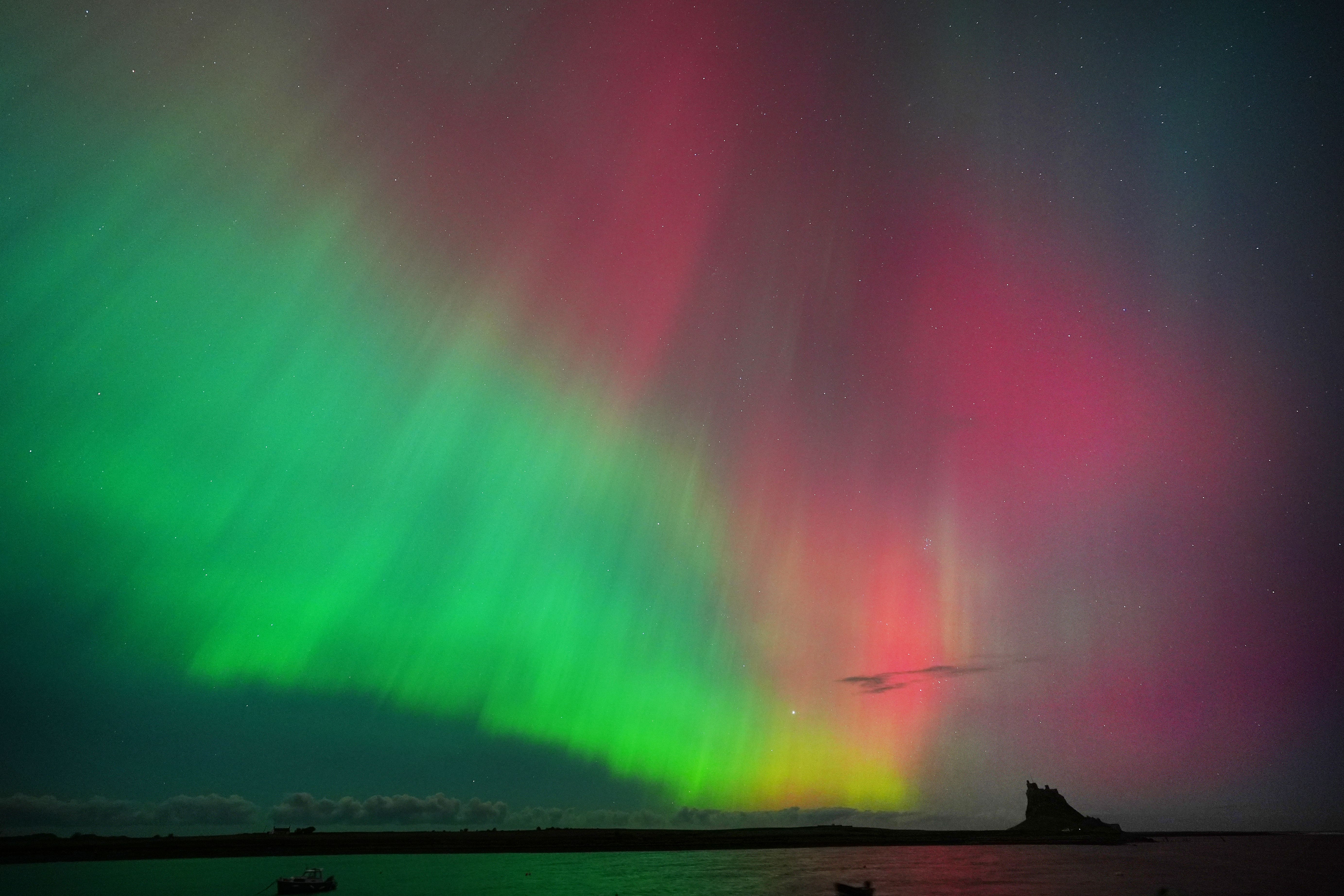Northern Lights put on stunning display across England
The Northern Lights, also known as aurora borealis, lit up the night skies over England.

Your support helps us to tell the story
From reproductive rights to climate change to Big Tech, The Independent is on the ground when the story is developing. Whether it's investigating the financials of Elon Musk's pro-Trump PAC or producing our latest documentary, 'The A Word', which shines a light on the American women fighting for reproductive rights, we know how important it is to parse out the facts from the messaging.
At such a critical moment in US history, we need reporters on the ground. Your donation allows us to keep sending journalists to speak to both sides of the story.
The Independent is trusted by Americans across the entire political spectrum. And unlike many other quality news outlets, we choose not to lock Americans out of our reporting and analysis with paywalls. We believe quality journalism should be available to everyone, paid for by those who can afford it.
Your support makes all the difference.The Northern Lights have lit up the skies with bright pink hues visible on Thursday.
Photos of the dazzling natural phenomenon, also known as aurora borealis, were captured across England.
The lights could be seen as far south as Kent and East Anglia, and were also spotted further north in Lancaster by Professor Jim Wild, 49, who captured the Northern Lights from his back garden.
The academic, who researches the aurora and space weather at Lancaster University, told the PA news agency: “My research focuses on the physics of the connections between the Sun and the Earth.
“Over the years, I’ve been to the Arctic Circle several times to make measurements of the aurora, but it’s really special to see the northern lights from your back garden with your whole family.”
The Met Office said relatively clear skies were forecast for much of the UK, creating a “decent chance of visibility”.
A spokesman for the forecaster said there had been “more space weather events in recent months”, including the Northern Lights, because the sun was nearing the peak of its solar cycle.
Met Office spokesman Stephen Dixon said there was a chance of some visible auroras across parts of the UK on Thursday night and into the early hours of Friday.
The auroras on Earth, which are most commonly seen over high polar latitudes but can spread south, are chiefly influenced by geomagnetic storms which originate from activity on the Sun.
The sun works on a cycle of around 11 years called the solar cycle – with peak sunspot activity on the surface of the Sun referred to as solar maximum.
Sunspots give the potential for Earth-directed releases of large bursts of energy, called coronal mass ejections, which can lead to aurora visibility.
Aurora displays occur when charged particles collide with gases in the Earth’s atmosphere around the magnetic poles.
As they collide, light is emitted at various wavelengths, creating colourful displays in the sky.